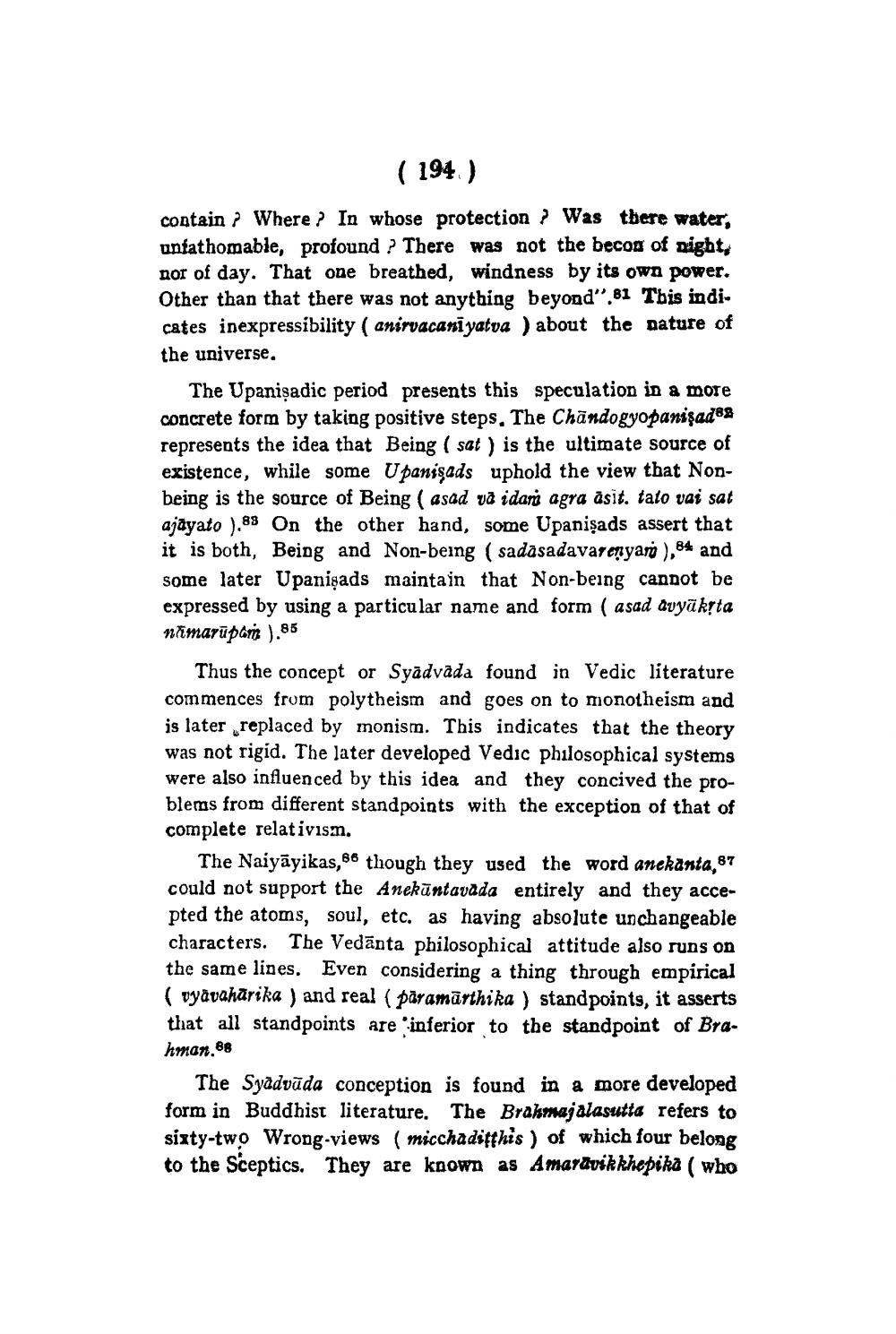________________
( 194 )
contain ? Where? In whose protection ? Was there water, unfathomable, profound ? There was not the becon of night, nor of day. That one breathed, windness by its own power. Other than that there was not anything beyond". 81 This indi. cates inexpressibility ( anirvacani yatva ) about the nature of the universe,
The Upanişadic period presents this speculation in a more concrete form by taking positive steps. The Chandogyopanizados represents the idea that Being ( sat ) is the ultimate source of existence, while some Upanişads uphold the view that Nonbeing is the source of Being ( asad va idan agra asit. talo vai sat ajāyato ),88 On the other hand, some Upanişads assert that it is both, Being and Non-being (sadasadavarenyar ), 84 and some later Upanişads maintain that Non-being cannot be expressed by using a particular name and form ( asad avyāksta nimarüpan ).85
Thus the concept or Syadvada found in Vedic literature commences from polytheism and goes on to monotheism and is later replaced by monism. This indicates that the theory was not rigid. The later developed Vedic philosophical systems were also influenced by this idea and they concived the problems from different standpoints with the exception of that of complete relativism.
The Naiyāyikas, 86 though they used the word anekanta,87 could not support the Anekāntavada entirely and they accepted the atoms, soul, etc. as having absolute unchangeable characters. The Vedānta philosophical attitude also runs on the same lines. Even considering a thing through empirical ( vyävahārika ) and real (paramārthika ) standpoints, it asserts that all standpoints are inferior to the standpoint of Brahman.88
The Syadvūda conception is found in a more developed form in Buddhist literature. The Brakmajalasutta refers to sixty-two Wrong-views ( micchaditthis) of which four belong to the Sceptics. They are known as Amardvikkhepika ( who




